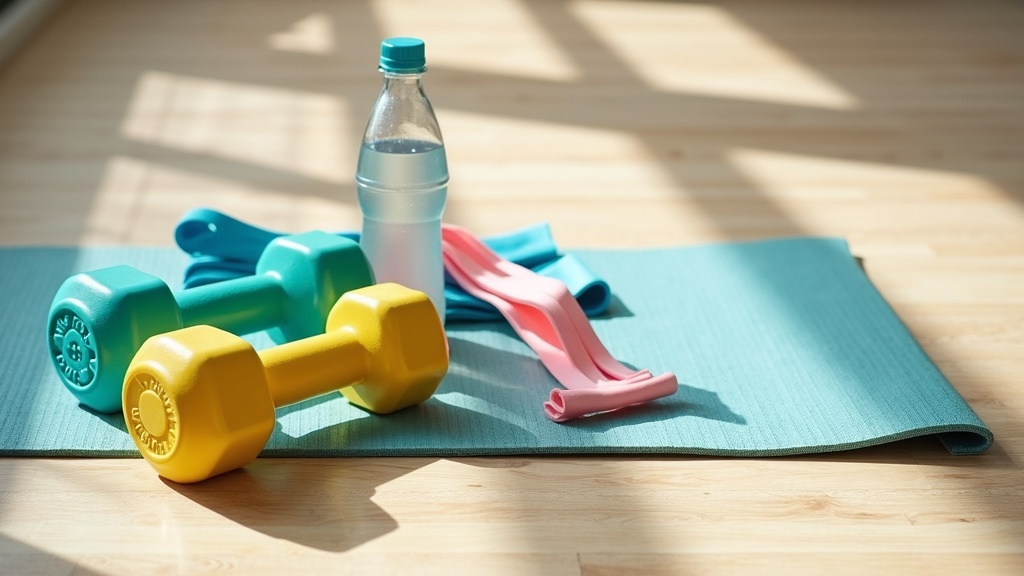If you’re curious about strength training routines for women and not sure where to start, you’re not alone. Lifting weights isn’t just about building big muscles. It’s about getting stronger, feeling more confident, and enjoying better overall health. With so much information available, I’m here to break it down and share what’s actually useful if you’re new or hoping to take your routine up a notch.

Why Strength Training Matters for Women
Strength training is really important for women, not just for toning but also for supporting bone health, giving your metabolism a boost, and making everyday activities easier. Studies show that weight training helps keep muscle mass and bone density as you age. Plus, it’s awesome for mental health, helping lower stress and lift your mood.
For women, these routines aren’t about fitting into a stereotype. They’re about building a strong, healthy, and capable body that supports your favorite activities. Whether you want to carry groceries with ease, hike farther, or just feel more confident, strength training can help you get there. It also makes daily tasks feel lighter and can step up your confidence to try new sports or outdoor adventures.
Getting Started with Strength Training
Starting any new fitness habit might seem a bit intimidating, especially because there’s so much conflicting advice online. The truth is, the fundamentals are simple once you break them down. You don’t need a lot of experience or fancy equipment to get results. In fact, anyone with determination can start right at home with a few basic moves.
The main features of a beginner routine include exercises that work all your major muscle groups and enough consistency so your body can adapt and improve. Here are a few terms you’ll run across:
- Reps: How many times you do a single move before resting.
- Sets: A collection of reps done back-to-back before resting, for example, three sets of ten reps.
- Rest: The chill time between sets, usually between 30 seconds to 2 minutes.
- Form: The correct way to do a move—this is important for both progress and staying safe.
If you’re just starting out, go with bodyweight exercises or light dumbbells and work on getting your form right before thinking about how much you can lift.
Building a Simple Strength Training Routine
A beginner-friendly routine needs to be clear and approachable. Functional movements are a good place to begin because they work multiple muscle groups at once and look like real-life actions. Here’s a straightforward routine you can do two or three times a week:
- Squats: Hits your legs and glutes. Start with bodyweight and add dumbbells as you improve.
- Pushups: Works your chest, shoulders, and arms. Drop to knees or use an incline if needed.
- Bentover Rows: Targets your back. Try dumbbells, resistance bands, or even milk jugs if at home.
- Deadlifts: Engages your glutes, back, and hamstrings. Go for a light weight and perfect your form first.
- Planks: Builds up core stability. Start with 20–30 seconds and increase over time.
Do each move for 10–12 reps and aim for 2–3 sets each. Rest about a minute between sets. The whole circuit can take under 45 minutes and can be adjusted depending on how you’re feeling that day. As you get stronger, try to increase either the weight or the number of reps slightly every week or two to keep your body making gains.
Choosing Equipment For Home or Gym Strength Training
It’s absolutely possible to get stronger with your own bodyweight, but a few pieces of gear can pump up the variety and challenge. Here are some essentials that make training even more useful:
- Resistance Bands: These are easy to use, affordable, and take up hardly any space. They’re great for making exercises tougher and giving you more options at home.
- Dumbbells: Super versatile for tons of moves. Adjustable sets are nice, but having two or three pairs at various weights is plenty for beginners.
- Kettlebells: Great for swings, goblet squats, and challenging core movements. These add a lively element to your workout.
- Yoga Mat: Keeps you comfortable during planks, stretches, or any floor moves, and it can be easily rolled away when you’re done.
If you’re at a gym, you’ll have even more choices—barbells, cable machines, and benches—but don’t let equipment get in the way of starting out. Simple tools work very well!
Tips for Progressing and Staying Motivated
Building strength is a gradual process and being consistent is way more important than being perfect. Here are a few practical ideas to keep you moving forward:
- Track Your Progress: Jot down your weights, reps, or even write a quick note about how a workout felt. Watching your progress—no matter how small—fuels motivation.
- Mix Up Your Routine: Every few weeks, try swapping the order of exercises, bumping up the weight, or experimenting with new moves. Your body and brain will benefit from new challenges.
- Make Time for Rest: Muscles need time off to recover and grow stronger. Try not to work the same area on back-to-back days.
- Celebrate Your Wins: Whether you picked up a heavier dumbbell, managed one more pushup, or just felt confident, these victories matter. Self-praise can give you a real boost.
- Buddy Up or Join a Group: Working out with a friend or popping into a group class brings accountability and, honestly, makes fitness a lot more fun.
Remember, taking photos or doing a simple fitness test every few weeks helps you spot changes you might otherwise miss. Clothing can fit differently, your mood may lift, or you might surprise yourself with newfound energy during the day.
Common Challenges and How to Tackle Them
We all hit roadblocks, especially as women starting strength routines when old myths can get in your way. That story about “lifting makes women bulky”? It’s not true. Gaining noticeable muscle takes a lot more effort and specific training. For most women, you’ll simply look and feel more toned and powerful.
Myth-Busting
- Lifting will make me too muscular: Building significant muscle is difficult for most women due to naturally lower testosterone. Typical routines help you tone and make you stronger, not “bulky.”
- Strength training is just for younger women: Actually, women of any age get great benefits. Research even says strength work is crucial for bone health as you get older, helping you stay active and independent.
- Worried about injury? Focusing on good form and starting light makes strength work safe, and it actually protects joints and improves posture over time.
Keeping Motivation Strong
- If workouts feel stale: Refresh things by changing exercises, buying a new band or dumbbell, or challenging a friend to work out with you. A new playlist can also bring new energy!
- Hitting a plateau? Try lifting a little more, adding a couple extra reps, or shortening your rest breaks. Little tweaks make a difference.
Sample Weekly Strength Training Plan for Women
Looking for a simple routine to follow? Here’s a bare bones, effective weekly split to start with:
- Monday, Full Body: Squats, pushups, bentover rows, plank.
- Wednesday, Lower Body Focus: Deadlifts, lunges, glute bridges, calf raises.
- Friday, Upper Body Focus: Shoulder presses, dumbbell rows, biceps curls, triceps dips.
Add in 30 minutes of steady walking or light cardio on other days if you wish. The most important thing is to show up for yourself regularly—progress follows consistency, not perfection.
Frequently Asked Questions
Want to know more about women’s strength training? Here are some questions I often hear, along with some down-to-earth answers:
How often should women do strength training?
Answer: Hitting the weights two to three times per week is ideal for most. This gives enough stimulus for progress and plenty of daylight between workouts for recovery.
Should I do strength training or cardio first?
Answer: If growing stronger is your main goal, handle your strength moves first, before any cardio. This way, your muscles are fresh and ready to deliver their best effort.
What about soreness?
Answer: Mild soreness, especially when starting, is normal. Ease up with stretching, low effort movement, and lots of fluids. But if pain feels sharp or lingers, take a rest day and listen to your body.
Wrapping Up
Strength training routines give women of all backgrounds the chance to boost confidence, stay active, and truly enjoy movement. Whether you’re a total beginner, starting up again after time away, or just looking for some direction, the best time to begin is right now. Growth comes in small steps—each rep and each workout adds up over the months. Your adventure is worth it, every wobbly pushup and every new milestone along the way.
